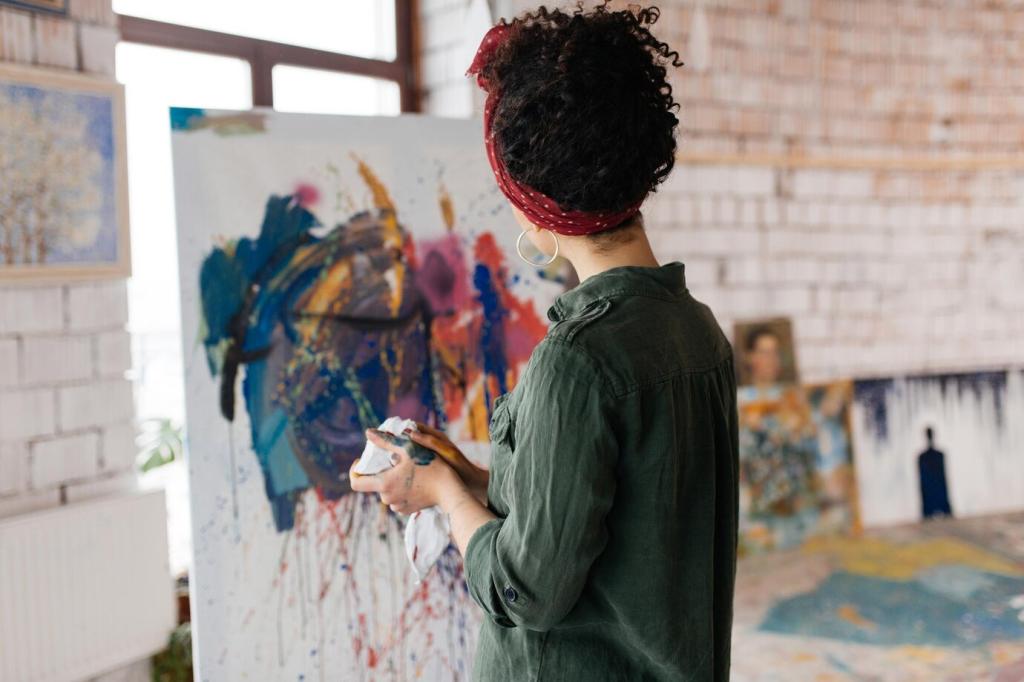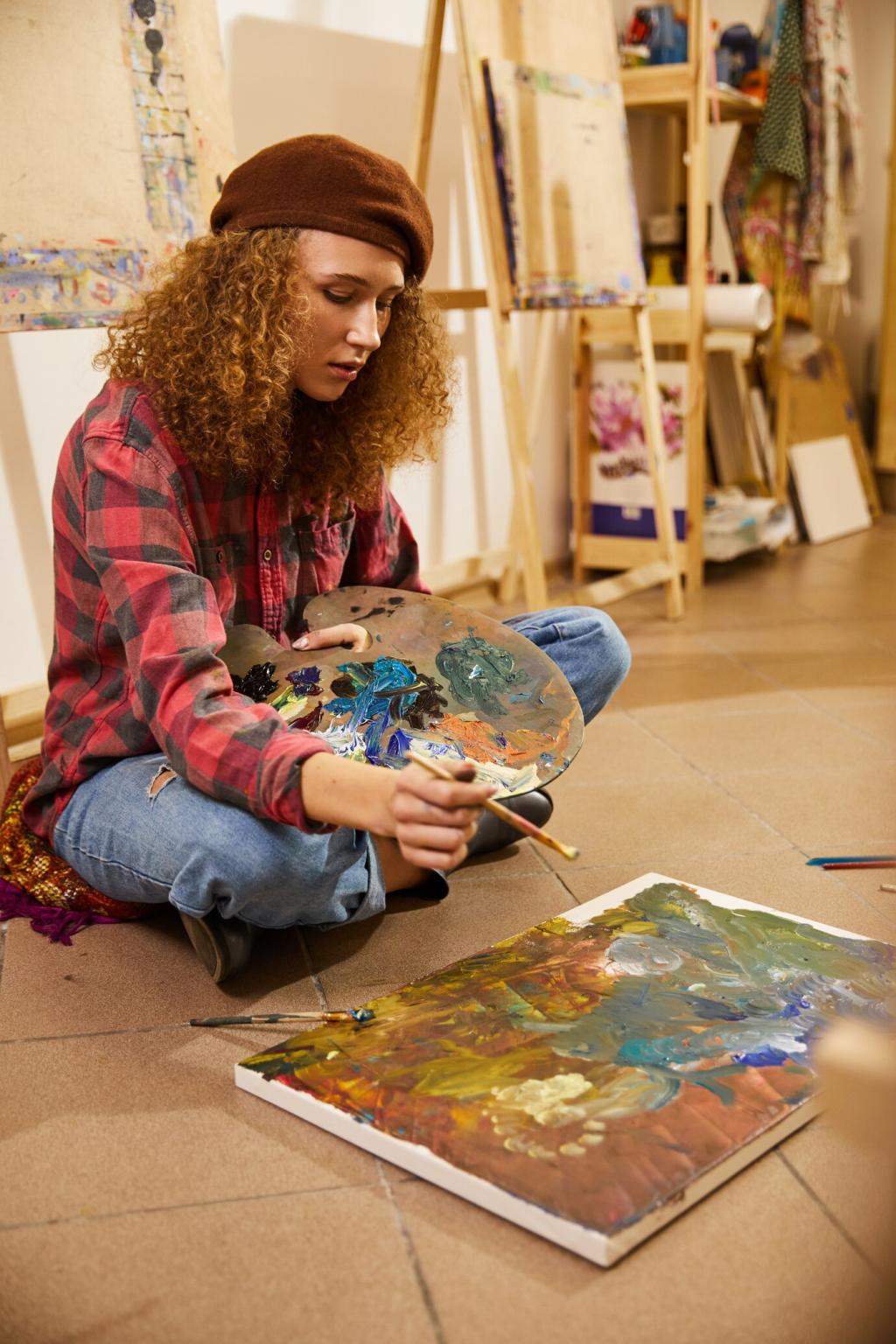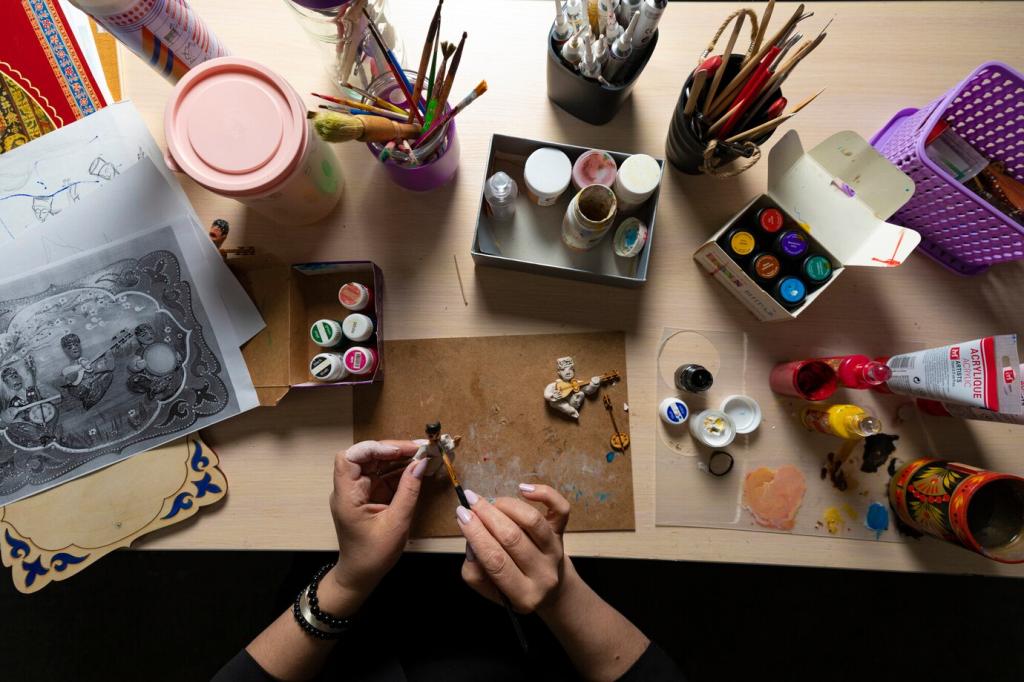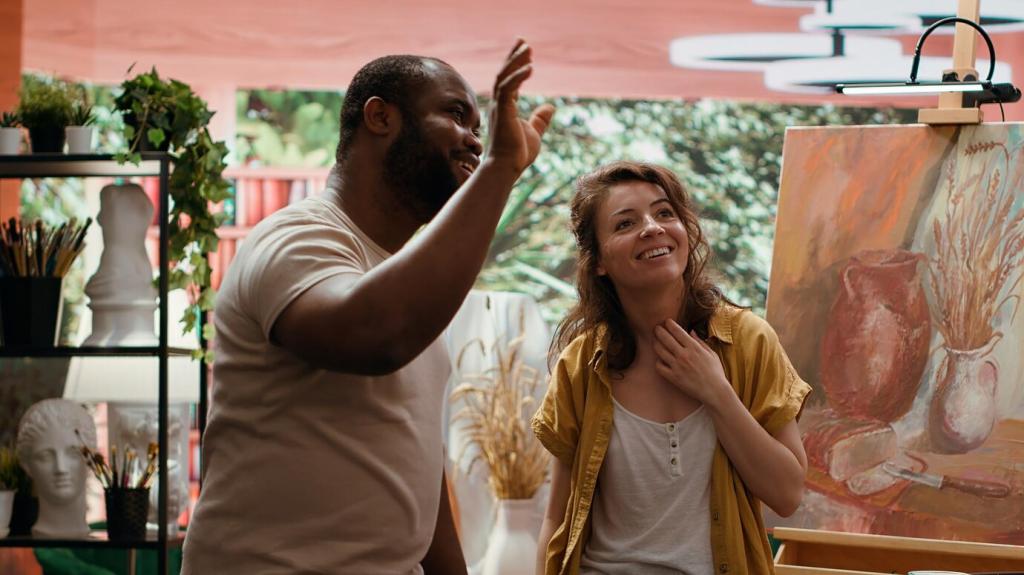Middle Eastern Calligraphy and Geometry: Lines of Devotion, Patterns of Infinity
Chosen theme: Middle Eastern Calligraphy and Geometry. Step into a world where a reed pen breathes life into letters and a compass unlocks constellations, inviting you to learn, create, and share your voice through measured beauty.



Origins Across Sand and Stone
Early Kufic inscriptions, hewn into stone with confident, angular strokes, align naturally with square grids used by builders. As paper spread, those same measured forms leapt into manuscripts, bridging chisel, compass, and page.
Origins Across Sand and Stone
Royal courts funded master artisans, madrasas refined scholarship, and markets traded pattern books. Techniques traveled on caravan routes, allowing geometric ideas and calligraphic styles to cross languages while preserving disciplined methods and shared aesthetics.
Tools of the Line and Circle
A qalam is cut at a precise angle, tuned to width, and polished for smooth flow. Its chisel tip establishes letter proportions, turning pressure shifts into rhythm, and transforming ink into a dance of measured breath.

Square Kufic maps letters to a counted grid, letting words become architecture. By repeating units and honoring negative space, names and verses transform into balanced labyrinths where readability and ornament negotiate a beautiful truce.

Scripts in Conversation with Geometry
Naskh rides circular rhythm. The curve sets cadence, x-height and nib angle govern proportion, and counters glow with controlled light. Practice looping ovals consistently, then post your sheets to compare arcs, spacing, and line energy.

Scripts in Conversation with Geometry
Thuluth stretches verticals and sweeps descenders in theatrical curves anchored by geometric scaffolds. Triangular balances hold the composition steady. Sketch skeleton lines first, then flesh them with ink, honoring tension between flourish and precise control.

This is the heading
Lorem ipsum dolor sit amet, consectetur adipiscing elit. Ut elit tellus, luctus nec ullamcorper mattis, pulvinar dapibus leo.

This is the heading
Lorem ipsum dolor sit amet, consectetur adipiscing elit. Ut elit tellus, luctus nec ullamcorper mattis, pulvinar dapibus leo.
Practice Pathways for Beginners
Daily Circles and Strokes
Spend fifteen minutes drawing nested circles and chisel-stroke ladders. Count beats as you move the nib, keeping angle consistent. Post a weekly photo of progress, and describe what changed in pressure, spacing, and confidence.
Build a Kufic Monogram
Choose a short name, set a square grid, and assign each letter a module. Test arrangements until black and white balance. Avoid unnecessary crossings, and share both successes and failures so others see your process.
Translate Pattern to Place
Design a small window lattice using a simple star and strapwork. Cut it from card, tape it to sunlight, and photograph the shadows. Tag your post so our community can learn from your construction choices.
Tradition Meets Today
Before drafting a logotype inspired by Naskh or Thuluth, study historical exemplars and consult knowledgeable practitioners. Share sketches, cite references, and invite critique about proportion, ligatures, and cultural context to avoid shallow borrowing.
